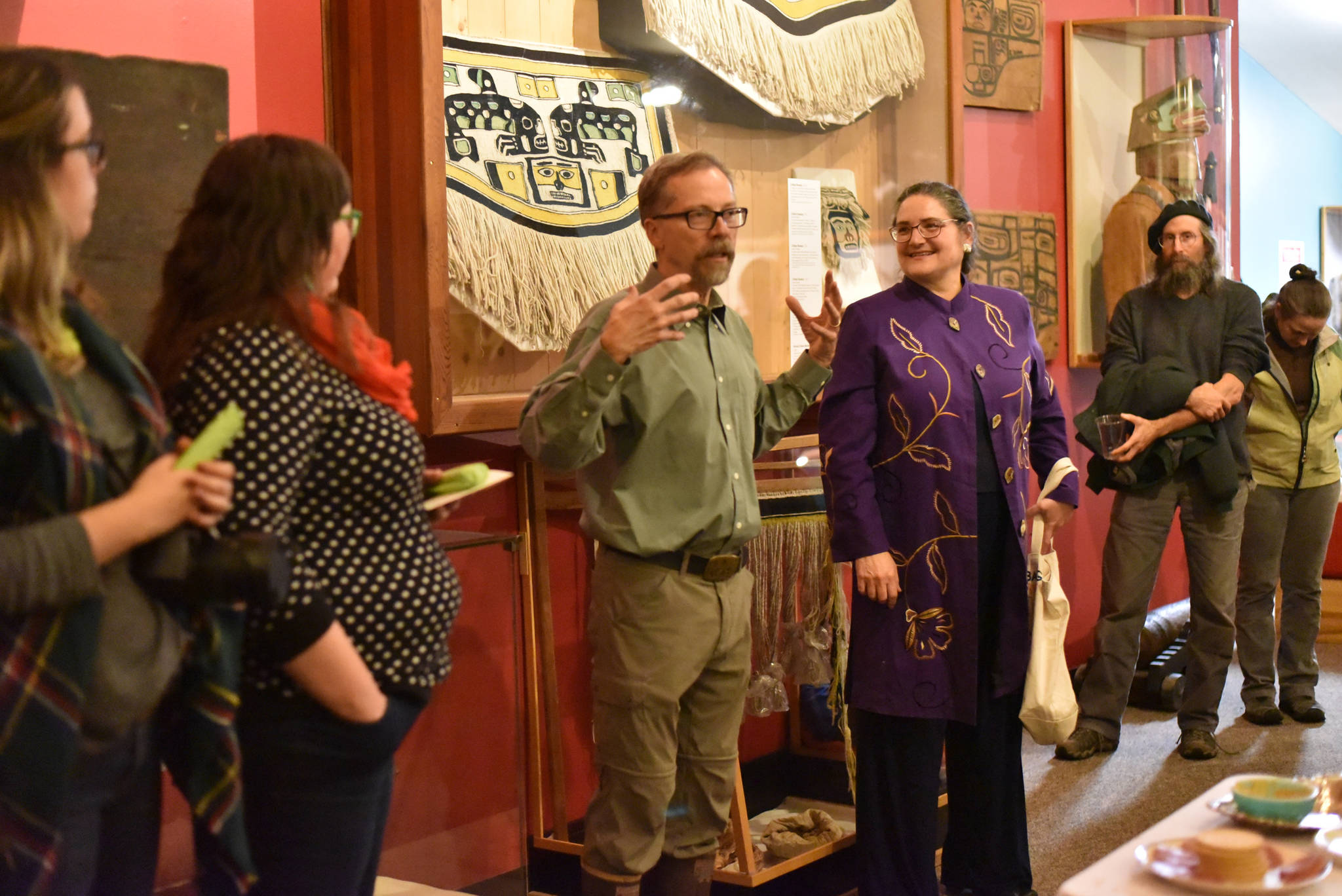When Daniel Henry was teaching Haines high school students in the 1980s and 1990s, he was surprised at the lack of local histories available to his students.
“I promised my students,” Henry said. “I swore that I would write a book that would make (the local history) clear.”
Twenty-five years later, that book, which comes out this fall, has helped inspire a redone main gallery in the Haines Sheldon Museum. The exhibit, “Everything from Afar Drifts Ashore,” opened Oct. 20 and will be in place for the next two years, said director Helen Alten.
It focuses on the time period between 1850 and 1900, a “highly accelerated cultural change period,” Henry said.
Before that, the Chilkat and Chilkoot people, who occupied the north end of Lynn Canal, had managed to minimize their interactions with Europeans and Russians.
“White people had been forbidden to come up here, unless for a very short visit to trade for furs,” Henry said.
“People just kind of left them alone,” Alten said. “They were powerful; they were strong. There were over 2,000 people in Klukwan in 1867. Some reports say as many as 4,000. It was a big, strong place.”
Klukwan, which in Tlingit means “the eternal village,” is about 20 miles inland up the valley from Haines. Yandeist’akye, a village that was then near the mouth of the Chilkat River, near where the Haines airport is today, can be colloquially translated as “everything from afar drifts ashore” — the name of the exhibit.
Parts of the exhibit tell the stories of three “critical meetings,” Alten said. The first was 150 years ago this month, when ship captain W.A. Howard and surveyor George Davidson, while waiting for the Oct. 18 transfer ceremony in Sitka, decided to travel north to meet with the Chilkoot (L’koot) leader Daanawaak and the famed Chilkat leader, Kohklux. Because they traveled north, the American flag was hoisted at what was likely Yandeist’akye on Oct. 17, 1867, beating out the flag-raising in Sitka, Alten said.
Two years later, Davidson returned to see the eclipse, which Henry calls “an incredible story.”
The third meeting was in 1879, with Wrangell-based missionary S. Hall Young and John Muir.
While Young didn’t make much of an impression with his “fire and brimstone” sermon — people remembered him as “what’s his face,” Henry said — John Muir was another story. At the end of Muir’s talk, the Chilkat Tlingit in attendance converted to Christianity, Alten said. They also tried to recruit Muir to be a teacher at a school in Klukwan.
The trip had a big impact on Muir as well. It’s the trip to Haines, Alten said, that “is probably what made (Muir) an environmentalist.”
The exhibit “talks about the richness of Tlingit culture,” Alten said. It contains some objects loaned from the Alaska State Museum, some from the collection of the Sheldon Museum itself, and other items loaned from tribes.
“That big list of artifacts really started pulling things together,” Henry said, “with tangible items that linked an intangible history with something that people could see and even touch — think about when they go to the museum.”
There are also big panels with quotes from elders, and historic quotes from the book, he said.
For the book, Henry collected early written records from Congressional, military, missionary, and other sources — “all the white guys” — but at the end of each episode, he includes the local Native perspective, collated from his interviews with 16 different Chilkat (Jilkaat) and Chilkoot (L’koot) elders.
“I didn’t want to write a book just based on white people’s perceptions of a Native territory,” he said.
The book, Henry said, “could not have taken place without the generosity of the Tlingit elders in the area.” It began when he first moved to Haines in the early 1980s and got to know then-L’koot leader Austin Hammond, who introduced him to other local elders.
“There are lots and lots of books about hardships and military actions,” Henry said. “This is a book about a very strong Native people who negotiated and retained their power all the way through.”
Look for an article specifically about Henry’s new book in an upcoming issue. The official release date, according to Amazon, is Nov. 15, though Henry said it’s already arrived for sale, or will soon, in several Alaskan locations.
The Sheldon Museum is open for its regular winter hours now. Find out more at http://www.sheldonmuseum.org/.
• Mary Catharine Martin is the Capital City Weekly managing editor.

